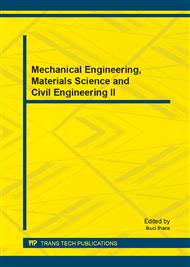[1]
HUANG Kun, Discussion about Li-ion battery technology [J], Battery Bimonthly, 2000, 30 (5): 217.
Google Scholar
[2]
Ming gang Jin, The development situation of solid Li-ion battery in China[J], Chinese Battery Industry, 2000, 5(2), 88.
Google Scholar
[3]
Walter A V S, Bruno S . Advances in Lithium-ion Batteries [M]. New York: Kluwer Academic /Plenum Publishers, (2002).
Google Scholar
[4]
Yongheng Zhang, Yong Zhou, Liangbi Wang. Experimental study of heat transfer from round nozzle impinging jet [J]. Journal of Thermal Science and Technology, 2006, 5 (1): 38-43.
Google Scholar
[5]
Goldstein RJ Behbahani AI, Kieger K, et al. Stream wise distribution of the recovery factor and the local heat transfer coefficient to an impinging circular air jet[J]. Int. J. Heat Mass Transfer, 1986, 29 (8): 1227-1235.
DOI: 10.1016/0017-9310(86)90155-9
Google Scholar
[6]
Jambunathan K, Lai E, Moss M A, et al. A review of heat transfer data for single circular jet impingement [J]. Int. J. Heat Fluid Flow, 1992, 13 (2): 106-115.
DOI: 10.1016/0142-727x(92)90017-4
Google Scholar
[7]
Colucci D W, Viskanta R. Effect of nozzle geometry on local convective heat transfer to a confined impinging air jet [J]. Experimental Thermal Fluid Science, 1996, 13(1): 71-80.
DOI: 10.1016/0894-1777(96)00015-5
Google Scholar
[8]
Jirui Zheng, Baoguan Wang. Experimental investigation of simulating impingement cooling of concave surfaces of turbine air foils [J]. Journal of engineering thermo physics, 1980, 1( 2) : 165 -175.
Google Scholar
[9]
Jirui Zheng, Baoguan Wang. Experimental investgation of impingement cooling by round jets of multiple rows [J]. Journal of engineering thermo physics, 1982, 3(3): 235 -241.
Google Scholar
[10]
Huber A M, Viskanta R. Effect of jet-jet spacing on convective heat transfer to confined, impinging arrays of axis-symmetric air jets[J]. Int. J. Heat Mass Transfer, 1994, 37(18): 2859 -2869.
DOI: 10.1016/0017-9310(94)90340-9
Google Scholar
[11]
Dano BPE, Liburdy JA, Kanokjaruvijit K. Flow character-istics and heat transfer performances of a semi-confined impinging array of jets: effect of nozzle geometry [J]. Int.J. Heat Mass Transfer, 2005, 48 (3-4): 691 -701.
DOI: 10.1016/j.ijheatmasstransfer.2004.07.046
Google Scholar


